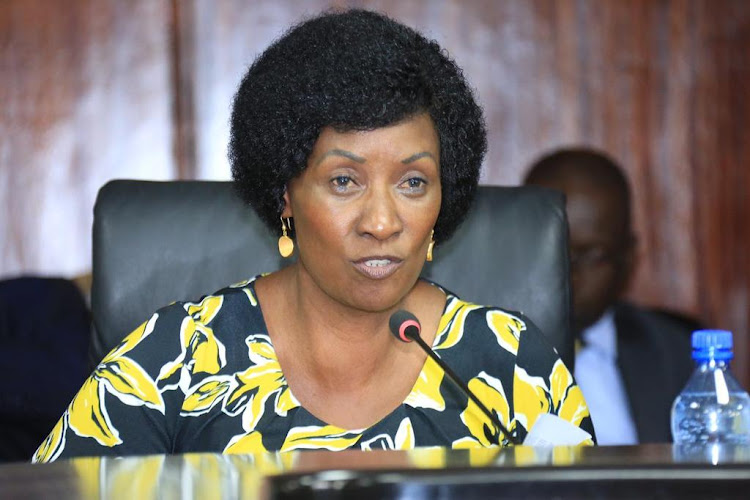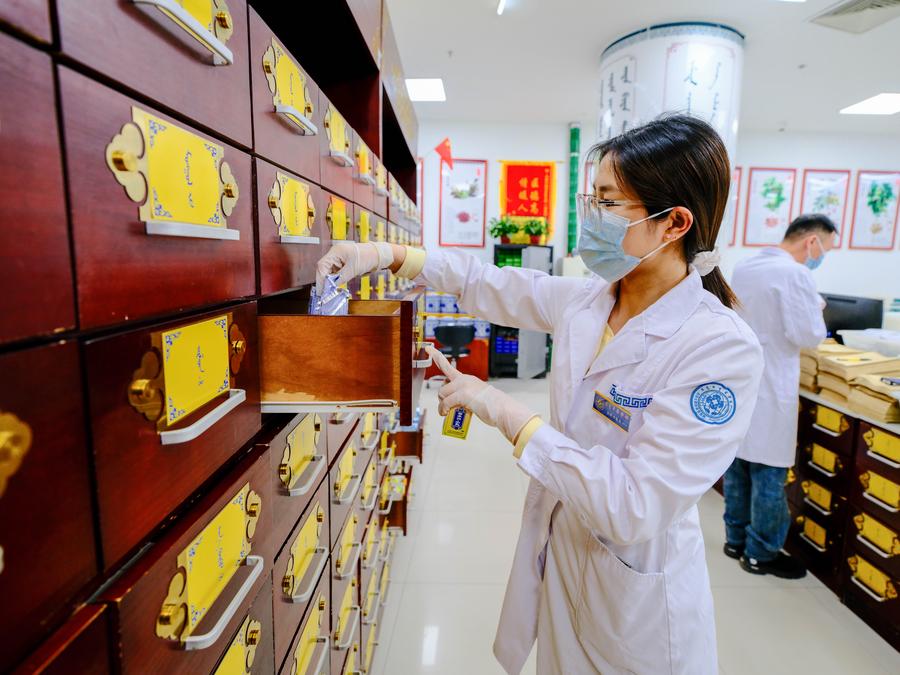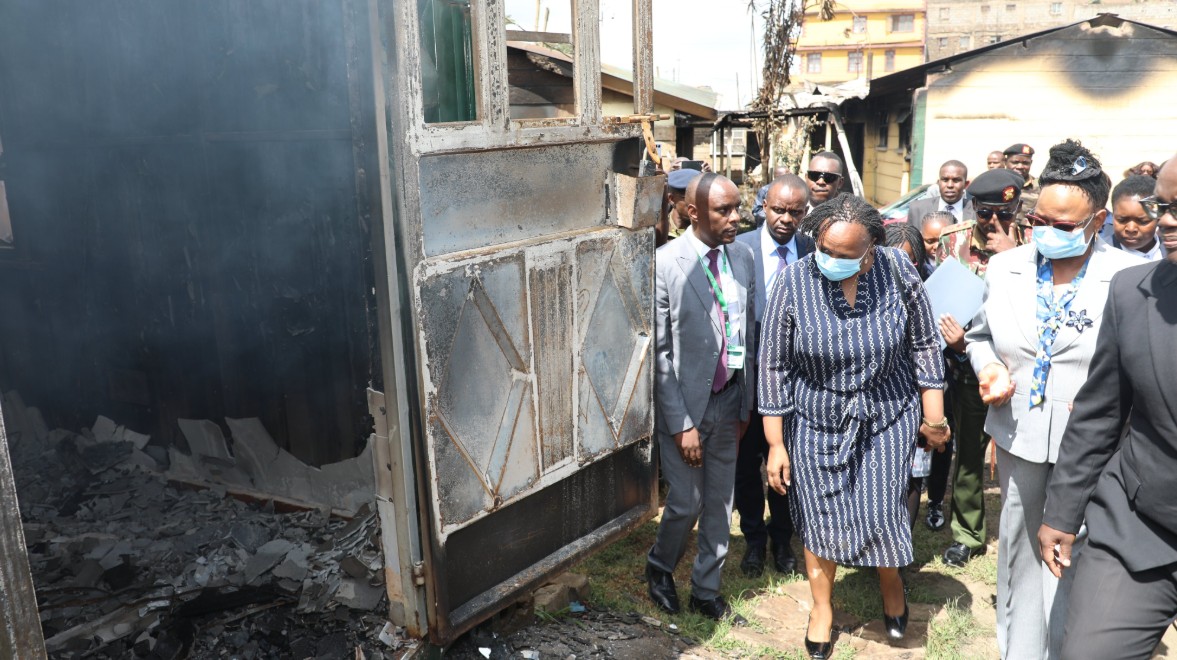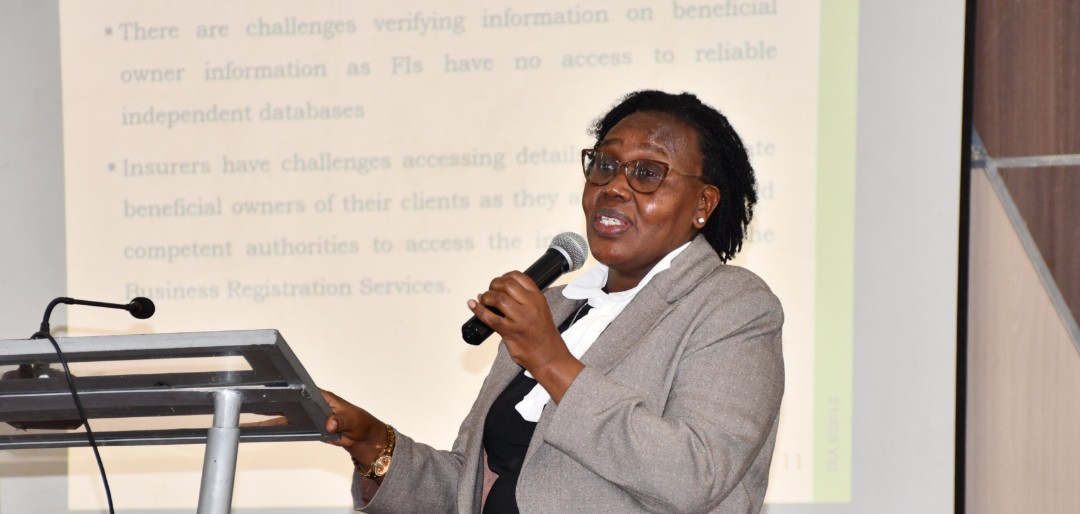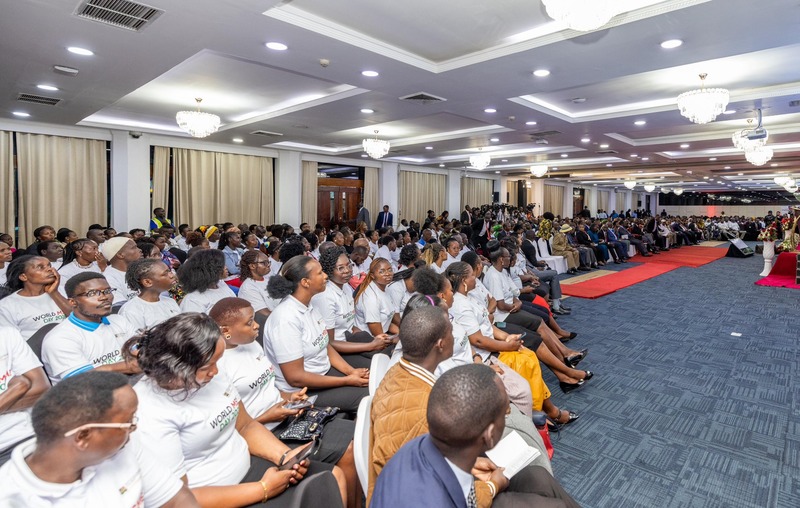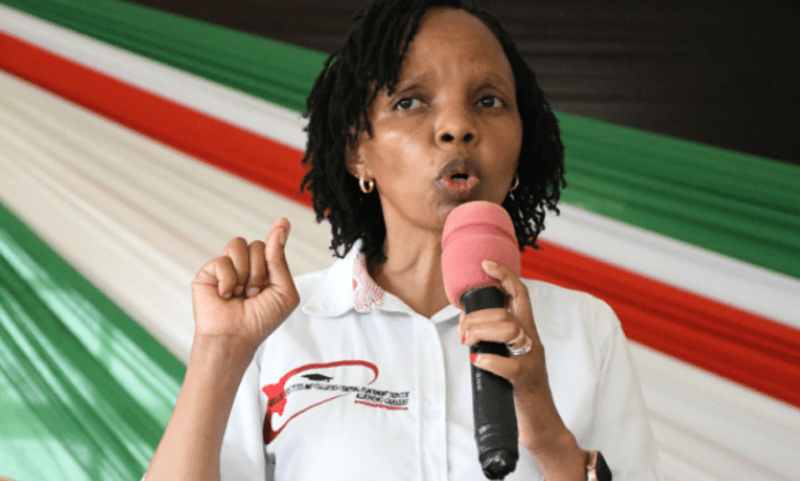Living for Joana: A mother's unyielding journey of raising a child with cerebral palsy

There is ongoing research into new treatments and potential breakthroughs for cerebral palsy, which include gene therapy, stem cell therapy, and developments in neuroplasticity and new medications.
"What will happen to my baby when I'm no longer here?"
This is the question that sits deepest in Josephine Nduta’s heart, constant and unshakable.
More To Read
At 55, Nduta has built her life around caring for her 15-year-old daughter, Joana, who lives with cerebral palsy. Every day is shaped around her needs — and every night, Josephine lies awake, fearing the day she won’t be there to meet them.
“I love her with my whole heart. But there are days when I feel like I have nothing left to give. If I get overwhelmed, what happens when I’m not here?”
It’s not just the physical strain — lifting her daughter’s growing body, helping her eat, changing her clothes, calming her through episodes of distress are tasks she has to do.
For 24 years, she served as an administrative assistant. But for the past 15 years, Nduta has taken on a role that no training could have prepared her for: full-time caregiver for her daughter, Joana.
Complicated pregnancy
It began with a complicated pregnancy. Nduta described the first trimester as a storm, with constant pain from arthritis; every joint was aching. Then came the anaemia, leaving her so weak that getting through the day felt like an insurmountable challenge. Just when she thought it couldn’t get worse, she started spotting, and that’s when the true fear set in.
Her doctor told her that she might have to terminate the pregnancy as her body was rejecting the baby. The news left her devastated. She sat there in shock, quietly shaking her head, unable to comprehend it, and asking, “Is there anything else I can do?”
With medication and complete rest, the spotting eventually stopped. Nduta held on to hope and resolved to fight for her baby, trusting that they would get through it together.
By the second trimester, things began to improve. Her strength slowly returned, and with it, a sense of normalcy. She started to feel like any other expectant mother — hopeful, excited, even glowing. She remembers beginning to decorate the baby’s room, a small but joyful sign that better days were ahead.
“When it was time to deliver, I went to the hospital expecting joy. Instead, the doctor looked at me with concern. ‘We can’t find a heartbeat,’ he said. I was asked to walk around and come back — but the heartbeat was still absent.”
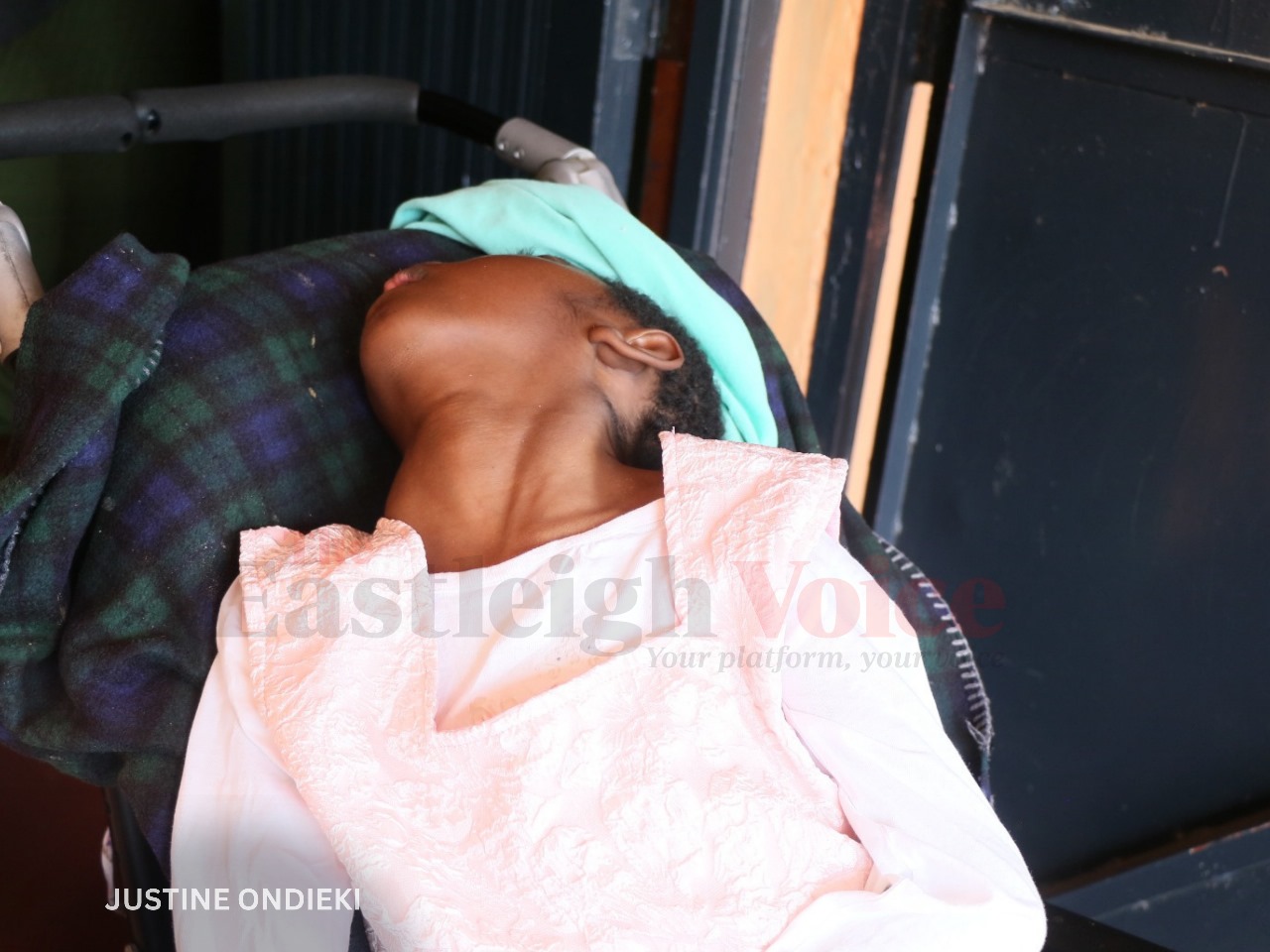 Josephine Nduta's daughter Joana as they narrated their journey and challenges in dealing with cerebral palsy. (Photo: Justine Ondieki)
Josephine Nduta's daughter Joana as they narrated their journey and challenges in dealing with cerebral palsy. (Photo: Justine Ondieki)
Unresponsive at birth
Joana was born unresponsive. She didn’t cry, and she wasn’t breathing. Nduta remembers the panic that washed over her as the medical team rushed to resuscitate her. Lying there, confused and terrified, she kept asking herself, “Is my baby alive?”
Nduta was told that Joana had swallowed amniotic fluid during birth.
“I don’t know when the damage occurred — whether it was during delivery, in the womb, or if it was her heart,” Nduta recalls. “No one gave me clear answers.”
Joana spent five days in the nursery.
“No doctor or nurse explained what signs to watch out for once we went home. I assumed we had made it through the worst of it.”
But over the months, her worries deepened.
“I didn’t have enough milk, so I supplemented with formula milk. But Joana wasn’t responding like other babies — no smiles, no coos. I told myself, maybe she’s just different,” she says. “But at five months, her neck still wasn’t stable. She wasn’t sitting on her own. She wasn’t even gripping things. Then she started convulsing.”
Hospital visits brought no answers.
“We were sent home each time, told to wait and see. But I knew something was wrong. Finally, someone advised me to go to Kenyatta National Hospital. That’s when they diagnosed her with cerebral palsy — the spastic type. It explained the stiffness in her limbs.”
Thus began a new chapter — therapy, medical appointments, and special care.
“It was a whole new world. The cost was overwhelming. We couldn’t carry her around like other babies, so we used taxis. That alone took so much out of us.”
Special programme
A glimmer of hope appeared when Joan was enrolled on a special programme at Lavington Primary School.
“She thrived there. Other children would help feed her. There was therapy, activities, and interaction. I’d see her smile. That school was a blessing,” Josephine says with warmth. “We even received transport support. She got to be a child among children.”
But like many good things, it didn’t last.
“The donor funding dried up. The programme ended. We had to go back home. That was a big blow. At home, she’s isolated, and we struggle with therapy.”
The stigma surrounding children with disabilities is another silent battle Nduta faces every day.
 Josephine Nduta who shared with The Eastleigh Voice the journey and challenges of caring for a child with cerebral palsy. (Photo: Justine Ondieki)
Josephine Nduta who shared with The Eastleigh Voice the journey and challenges of caring for a child with cerebral palsy. (Photo: Justine Ondieki)
Family gatherings
She continues to take Joana to family gatherings and social events, but there are always people who stare — long, uncomfortable stares. In the past, it used to hurt, and she would go home and cry. Now, Nduta tells people, "If you're curious, ask me. Don't just stare."
Despite all the challenges, Nduta believes that Joana understands her, and she understands Joana just as deeply.
“We’ve been together for 15 years. I know when she’s hungry, when she needs to be changed, when she wants a cuddle. She may not speak, but she communicates in her own way.”
Sleep, too, is scarce.
“At night, she screams — piercing, terrifying screams. I don’t know what she sees in her sleep. Sometimes, she doesn’t sleep for five nights in a row. In a good week, we get maybe two nights of rest.”
And in those moments of exhaustion, when Nduta feels like she’s breaking, she turns to prayer.
“There are times I’m changing her or feeding her, and I feel overwhelmed. Then I stop and say, ‘God, give me life, give me strength. Let me be here for her.’ Because if not me, then who?”
More therapists
Her plea to the government is simple but powerful: “Create more inclusive facilities. Train and deploy more therapists. Integrate our children into everyday settings. They have a right to be part of society too.”
Cerebral palsy (CP) is a group of disorders that affect a person’s ability to move and maintain balance and posture. It is caused by abnormal brain development or damage to the developing brain, which disrupts the brain’s ability to control muscles.
Dr Varsha Hirani, a consultant paediatrician, notes that delays in age-appropriate milestones are often picked up during routine visits.
Unusual stiffness of the body, such as crossing legs or floppiness when held up, arching of the back when lifted, and difficulty with feeding or suckling are common signs observed in babies under three months.
As the infant grows, rolling may be delayed, and the child may be unable to sit by eight months or crawl on all fours by 12 months. A strong preference for one side of the body may also develop.
“Early interventions enhance brain neuroplasticity, especially in the first six months. This improvement in motor skills also boosts cognitive function and prevents secondary complications like contractures, hip dislocation, or scoliosis,” she says.
Cerebral palsy can be caused by several factors during pregnancy, delivery and after birth.
In Pregnancy: Infections such as rubella, toxoplasmosis, and cytomegalovirus, genetic conditions, chronic illnesses in the mother (e.g., diabetes, thyroid issues, high blood pressure), and multiple births can increase the risk.
During Delivery: Preterm birth, low birth weight, birth asphyxia (low oxygen levels during birth), or trauma during labour can all contribute to cerebral palsy.
After birth: Infections like meningitis, severe jaundice, or head trauma can cause brain damage, leading to CP.
Hirani emphasises the importance of preventive measures: “Routine antenatal follow-ups, maintaining a healthy lifestyle, avoiding alcohol and drugs, and managing chronic illnesses during pregnancy are critical. During labour, monitoring foetal heart rate and ensuring safe delivery practices can prevent complications. After birth, early detection of jaundice and infections and their proper management can significantly reduce the risk of CP.”
Treatment for cerebral palsy has evolved significantly over the years.
Individualised physical therapy
Hirani highlights how individualised physical therapy, including robotic-assisted methods, and new tools in occupational therapy have improved communication and mobility in children with CP.
“Speech therapy and conductive education, which combines learning with physical therapy, have shown remarkable improvements in outcomes over the years,” she says.
Medications like anticonvulsants and botulinum toxin injections help to reduce spasticity, which is common in children with CP.
Surgical procedures have also advanced.
“Functional electrical stimulation of specific muscles can reduce spasticity, while orthopaedic surgery with the help of advanced imaging has greatly improved the quality of life for children with CP,” Hirani explains.
Cerebral palsy can range from mild to severe impairment, often accompanied by epilepsy. Children with CP may experience attention deficits, memory impairment, low processing speed, and difficulties with executive functions such as planning and organising.
Early intervention
Hirani suggests that parents support their child’s cognitive development through early intervention programmes.
“Individualised learning, whether at home or in special schools with inclusive educational programs, significantly improves outcomes. Positive reinforcement and focusing on the child’s strengths can also make a big difference as the child grows,” she advises.
Assistive communication tools, such as communication boards, are increasingly available to help improve learning.
Children with cerebral palsy often have higher energy expenditure and face feeding difficulties. Bone health is especially crucial.
Hirani stresses the importance of a balanced diet rich in protein and essential micronutrients like vitamin D, calcium, magnesium, and zinc to support muscle function and mobility. Proper hydration is also essential.
“A lot of research is being done on various types of diets, but none have been conclusively proven to be universally effective,” she notes.
Mental health
Mental health issues such as anxiety, depression, low self-esteem, social withdrawal, aggression, and tantrums are common in children with CP. Social challenges include individual and family stress, bullying by peers, difficulty making friends, and trouble participating in activities.
Hirani advises that open communication between parents and teachers is vital in addressing these challenges.
“Teaching independence, inclusion in educational programs, building support networks, and starting early therapies and extracurricular activities can greatly improve a child’s ability to cope with mental and social challenges,” she says.
Assistive devices such as mobility aids, communication devices, and robotic therapy have shown significant improvements in the quality of life for children with cerebral palsy.
“These technologies not only improve physical health but also provide individualized support, making children more independent in their day-to-day activities,” Hirani explains.
These aids also improve social interaction, which in turn enhances self-esteem.
There is ongoing research into new treatments and potential breakthroughs for cerebral palsy, which include gene therapy, stem cell therapy, and developments in neuroplasticity and new medications.
In Kenya, experts estimate that one in every 100 children is affected by cerebral palsy.
Globally, the World Health Organisation says approximately 18 million people live with some form of cerebral palsy.
The condition has a birth prevalence of about 1.6 to 2.9 per 1,000 live births, particularly in high-income countries. However, the prevalence is significantly higher in low- and middle-income countries.
Top Stories Today
Reader Comments
Trending







